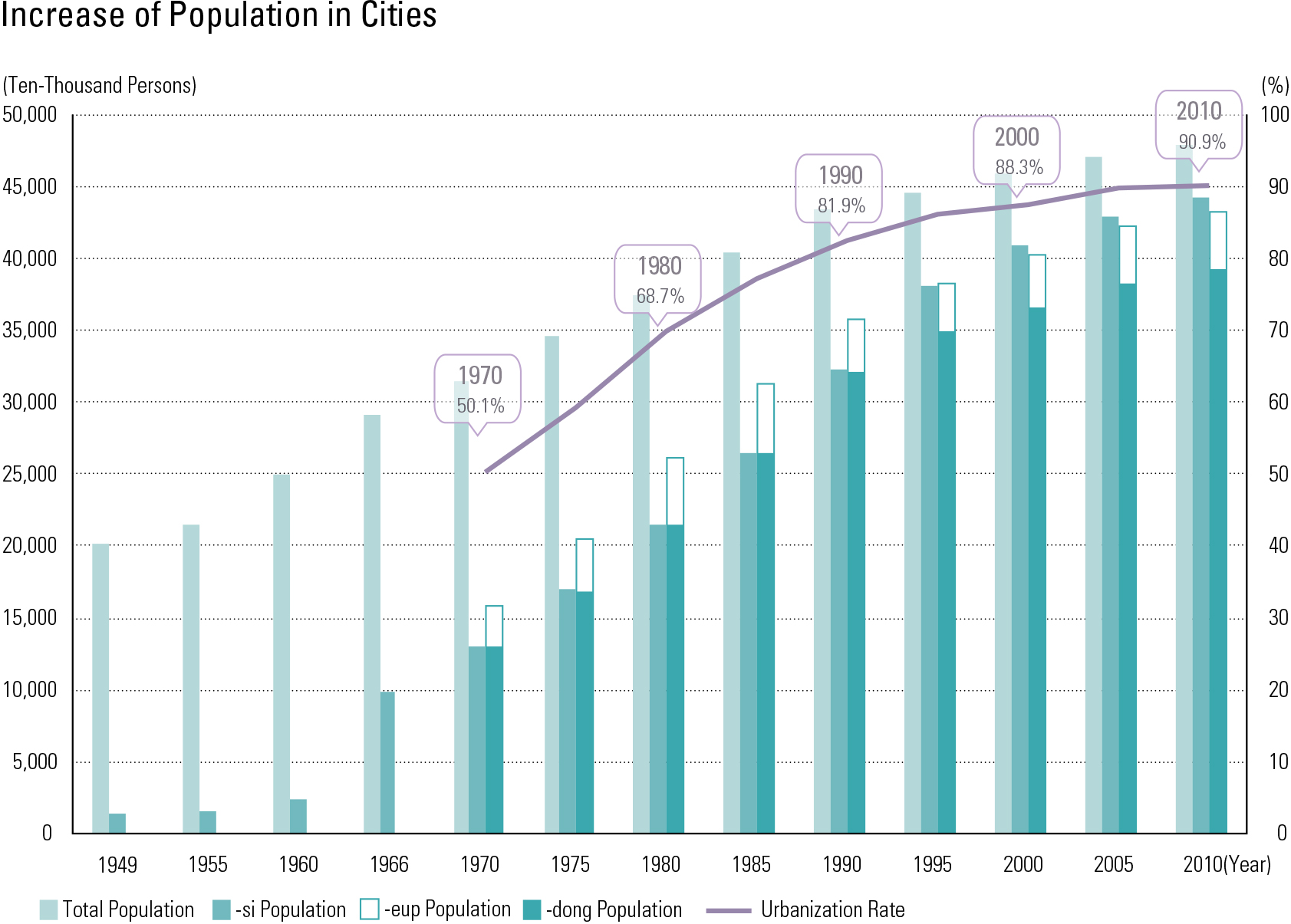English III
There are two methods for counting the urban population. One is to use administrative boundar- ies, and the other is to use special-purpose areas. When administrative boundaries are used, about 90.5% of the total population (51,327 thousand people, according to the national resident regis- tration in August 2015) lives in cities. When spe- cial-purpose areas are used for calculating urban population, about 91.7% of the total population (47,048,000 people) lives in urban areas. No mat- ter which method is used, Korea’s urban popula- tion exceeds 90%. The total urban area, designated under special-purpose areas, is 17,596 km2, which is 15.8% of the Korean territory (106,102 km2). Korea has 85 cities, and they are divided into regional city governments and local city govern- ments. Six metropolitan cities (Busan, Daegu, Incheon, Gwangju, Daejeon, and Ulsan) and two “special status” cities (Seoul Special City and the Sejong Special Metropolitan Autonomous City) are under regional city governments. There are 77 local city governments, and 28 (about a third) of them are concentrated in Gyeonggi-do, while Gyeongsangbuk-do has ten. Chungcheongnam-do has nine and Gyeongsangnam-do also has nine. Each metropolitan city is composed of self-gov- erning entities referred to as -gus. A local city government may also have -gus if its population is larger than 500,000. However, the -gus in local city governments cannot have a self-governing system, and they may be set up only for adminis- trative purposes. Both regional and local city gov- ernments may have -dongs, -eups, and -myeons as their smallest administrative units. These units reflect urbanization levels—highest in -dongs and lowest in -myeons. Conventionally, -dongs and -eups are considered urban areas.
page_2 |

